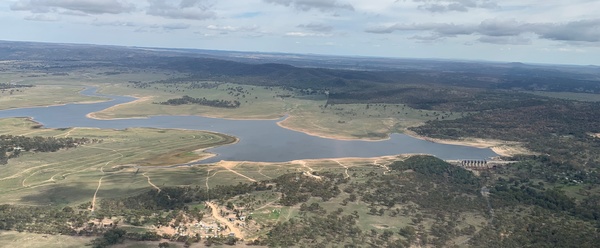Residents are being called on by the Southern Downs Regional Council to be “vigilant and curb excessive water use with consumption well above the shared target despite extreme level water restrictions”.
A council statement released this week said data collected since the council introduced the restrictions suggests most communities across the region are exceeding the shared target of 120 litres per person per day.
“Nearly all communities in the region exceeded water consumption targets with some using in excess of 250 litres per person per day,” the statement said.
“The Southern Downs moved to extreme level water restrictions in March in response to prolonged and severe drought conditions.
“Extreme water restrictions play a vital role in sustaining and conserving the region’s precious water supply as the drought continues and dam levels deplete.
“Yangan was the only community in the Southern Downs to meet water consumption targets in March, with Allora and Wallangarra using water slightly above the target level.”
Councillor for Economic Development, Regional Promotion and Tourism Rod Kelly said Yangan was example of how a community can work together to save water.
“I would like to acknowledge the work of Yangan residents and congratulate them on working to reduce their water use and meeting the target,” Cr Kelly said.
“Allora and Wallangarra also got close to meeting the target but we are still a long way from where we need to be as a region.
“Our two major centres, Warwick and Stanthorpe, are both still using too much water.
“We all play a part in managing our region’s water resources and we need the community to help reduce water usage.
“Our current water situation is serious and everyone needs to do their bit to make a difference.”
Councillor for Communities, Towns and Villages Sheryl Windle said residents and businesses “cannot get complacent with saving water in their homes and businesses”.
“It was great to see the region get some rain recently and put some much needed water into our tanks and dams,” Cr Windle said.
“But with our lawns and gardens looking a bit greener, there may be a misconception that we are no longer in drought or that we have now received enough rain.
“Everyone needs to remember that we are still in a very severe drought and our water supplies are very low.
“Water is our most precious commodity and it is crucial that as a community we are reaching water consumption targets.”
The council says ‘Extreme’ level water restrictions will continue “for the foreseeable future” and that it will continue to monitor the region’s water use and how it impacts water levels in the region’s dams.
“Water restrictions and any penalties for non-compliance are authorised under the Water Supply (Safety and Reliability) Act 2008,” the council statement said.
“Residents who see someone doing the wrong thing are encouraged to contact council.
“To understand what extreme level water restrictions mean for you or your business visit Council’s website or contact 1300 My SDRC (1300 697 372).
(SUBHEAD/BREAKOUT)
Councillors at their April meeting last week voted in favour of allowing “existing raw water customers and existing standpipes to continue use, and reduce the amount of water that can be taken for any individual residential address within the Southern Downs region from standpipes to an overall weekly limit of 2000 litres”.
The resolution also said water “can be purchased at a single or multiple collection times, with access to occur on weekdays between 8.00am until 3.00pm effective from 1 May 2019”.
The vote came as part of a review of the council’s ‘Water Security Strategy’ implemented in March which included the introduction of ‘extreme’ level restrictions.
The strategy also included an investigation of existing council underground bore water supplies in urban areas and “verification” of current dam levels, with the possible use of contract divers.
The Free Times last week asked the council for an update on those investigations and received the following response –
“SDRC continues to work with our consultants and the Queensland Government on emergency plans for securing water.
“Council has received an initial report regarding options for water security, and Council is currently reviewing existing SDRC owned bores and exploring potential new bore sites.
“Surveys to verify dam levels will be undertaken in late April and early May at Connolly, Leslie and Storm King Dams.
“These surveys will allow Council to further refine the modelling of remaining water available for use across the region.”







